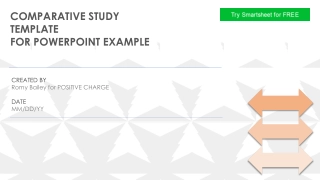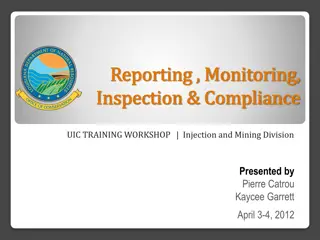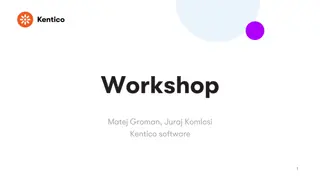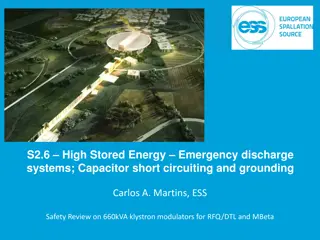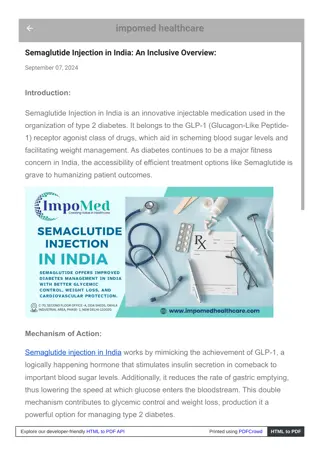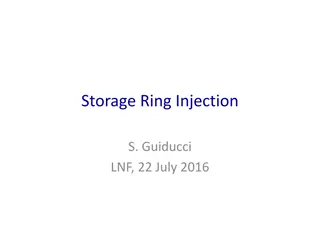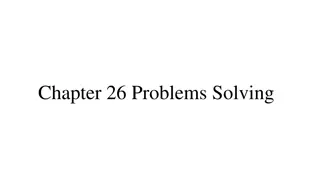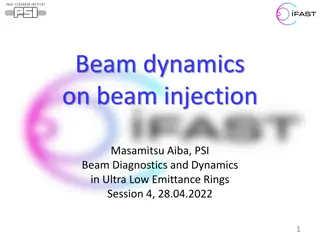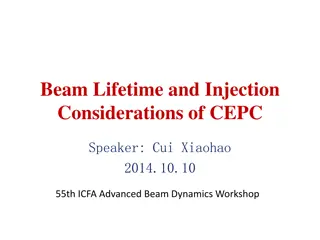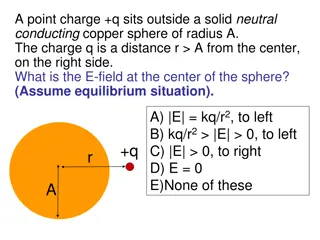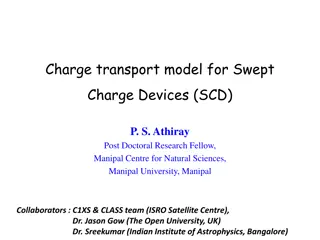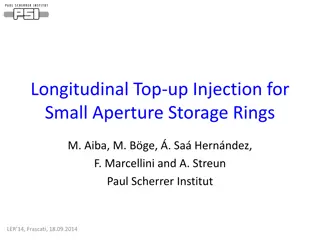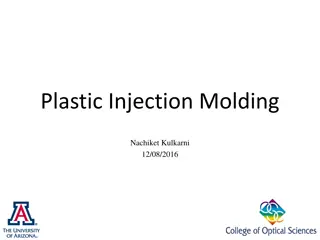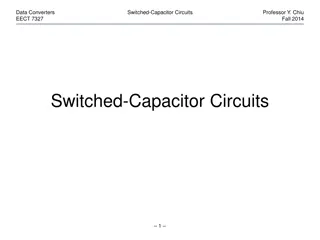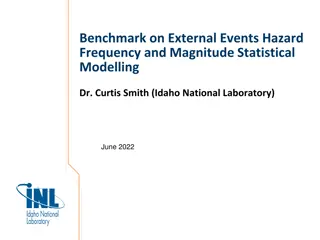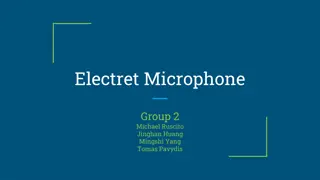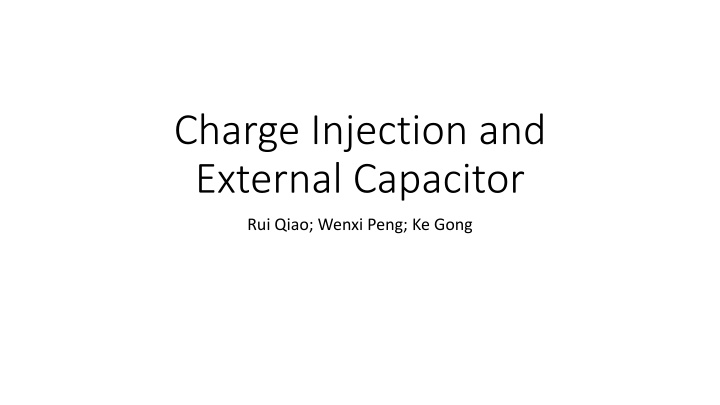
Charge Injection and External Capacitor
Explore the impact of charge injection and external capacitors on electronic devices, focusing on the importance of time step accuracy, transient current behavior, and charge sharing ratios. Learn how external capacitors influence charge accumulation and release, and discover insights on optimizing ASIC sensitivity and charge sharing through extensive analysis.
Download Presentation

Please find below an Image/Link to download the presentation.
The content on the website is provided AS IS for your information and personal use only. It may not be sold, licensed, or shared on other websites without obtaining consent from the author. If you encounter any issues during the download, it is possible that the publisher has removed the file from their server.
You are allowed to download the files provided on this website for personal or commercial use, subject to the condition that they are used lawfully. All files are the property of their respective owners.
The content on the website is provided AS IS for your information and personal use only. It may not be sold, licensed, or shared on other websites without obtaining consent from the author.
E N D
Presentation Transcript
Charge Injection and External Capacitor Rui Qiao; Wenxi Peng; Ke Gong
Background: Charge injection in TCAD 1ns 3ns 5ns 10ns 20ns 30ns 50ns 100ns
The time step problem A small time step is important to get accurate result! A large time step may save CPU time, but the result is wrong. Large time step Small time step Transient current of charge injection in PN detector
The transient current Negative current due to charge release through bias resistor Neighbor channel Current (A) The pre-amplifier integrate the transient current in short period. In a long period, the charge is release. Hit channel Log Transient time (s)
The cumulative charge Charge accumulation Charge release ? ?? ????? ?????? Inorbit Alberto SPICE
The external capacitor AMS-02 use external capacitors of 760 pF for one ladder. If 10 sensor in one ladder, each sensor has equivalent 76 pF external capacitor, which is comparable to the interstrip capacitance 20pF. The small external capacitor block the transient current from going into ASIC, leading to a stronger charge sharing. TCAD can implement contact capacitor to electrodes.
Charge sharing ratio vs ext. capacitor For long time period (>60ns), a smaller external capacitor increase the charge sharing ratio. For short time period(<60ns), a smaller external capacitor decrease the charge sharing ratio. 200pF 1000pF
Conclusion The cumulative charge will slowly release due to the bias resistor. The ASIC should not be sensitive to this slow components (test). The charge sharing ratio from 40~60ns ranges from 0.28% ~ 0.5%, which match previous calculation. The external capacitor affects the charge sharing ratio. Need spice to verify.

